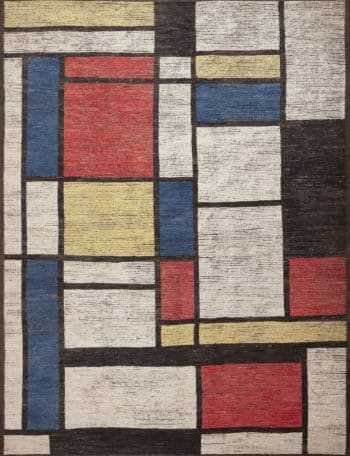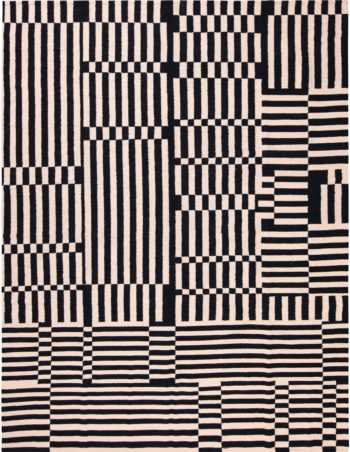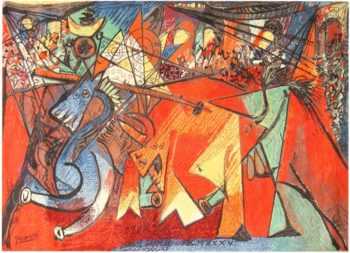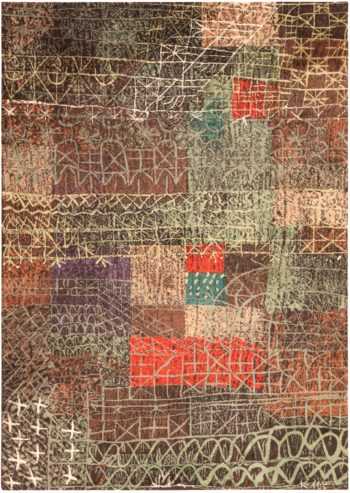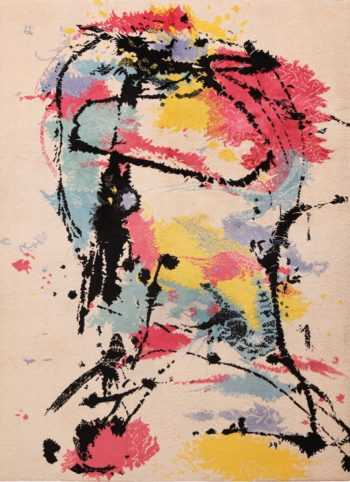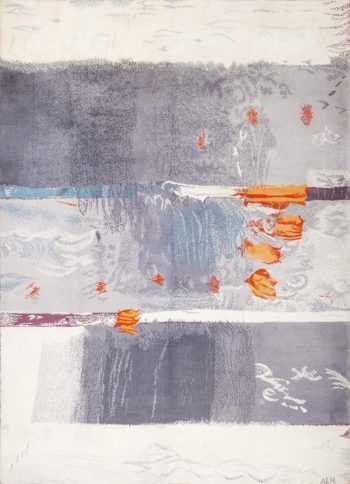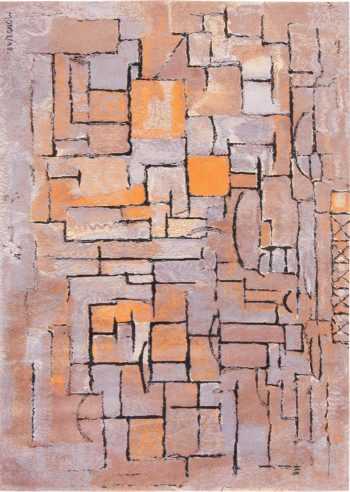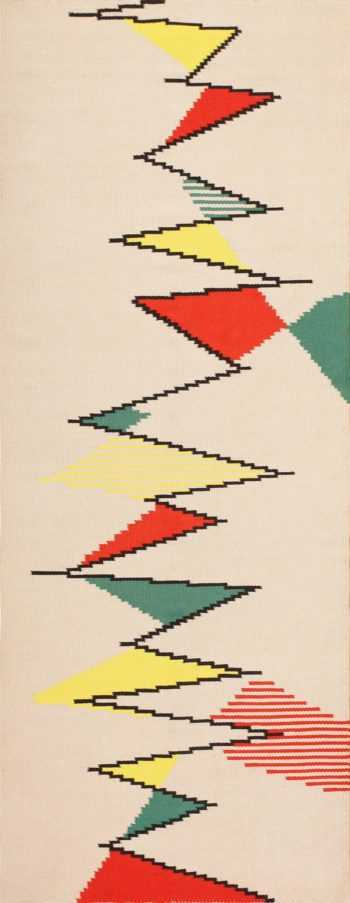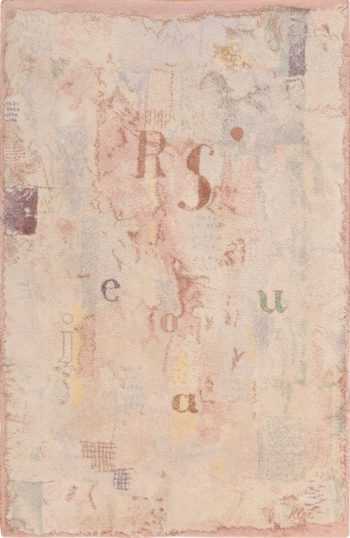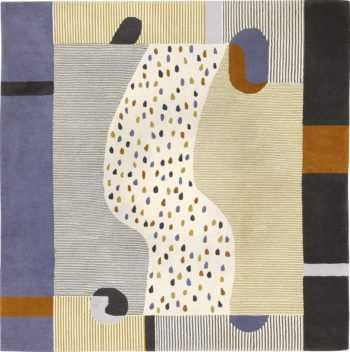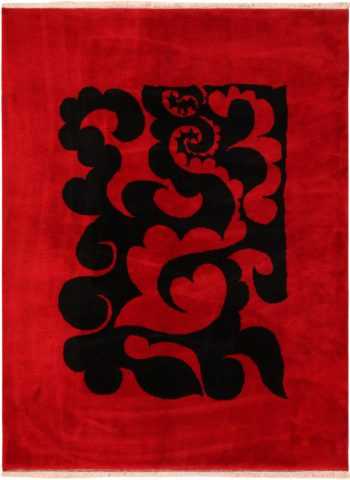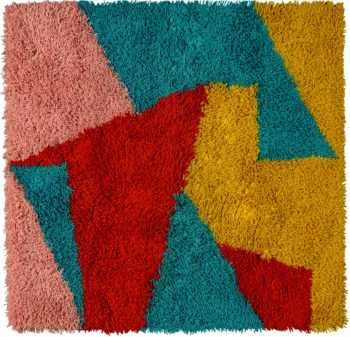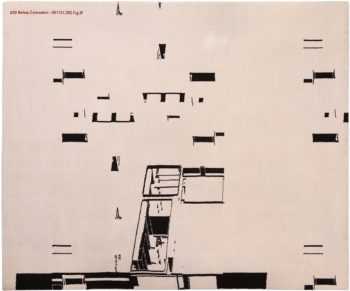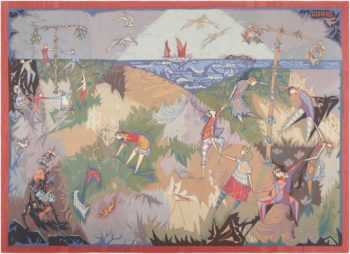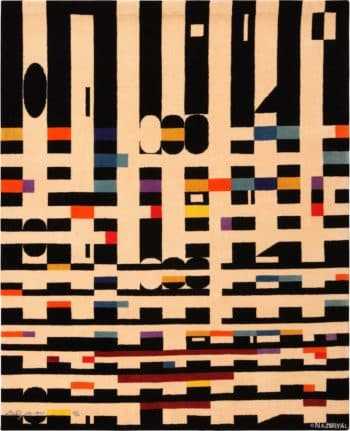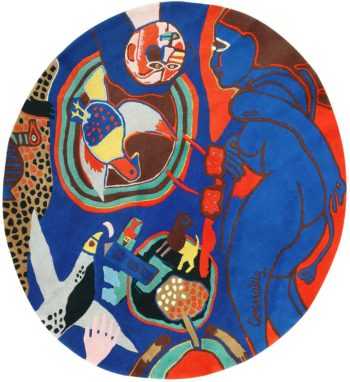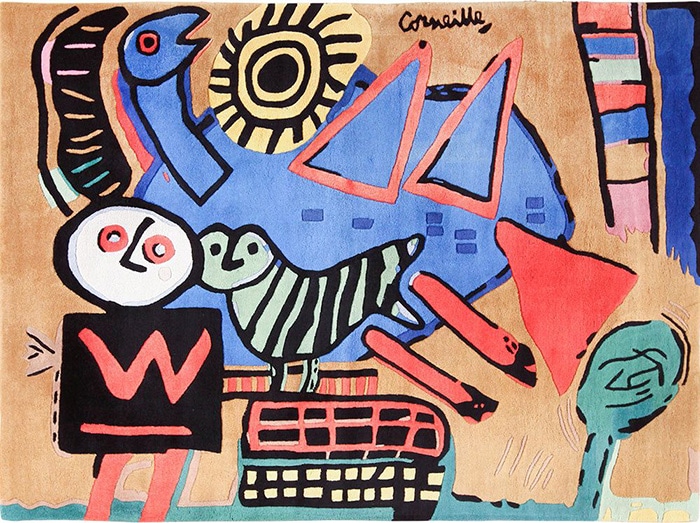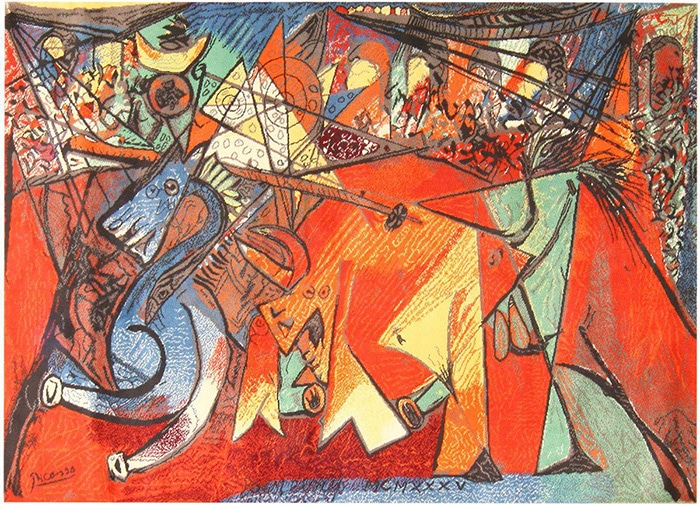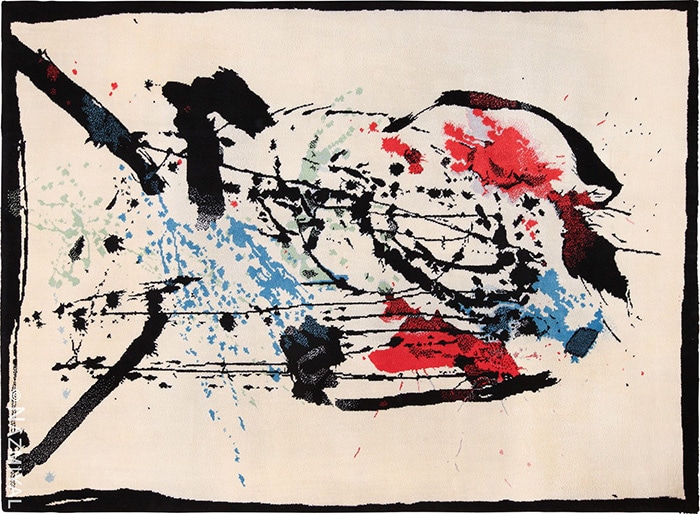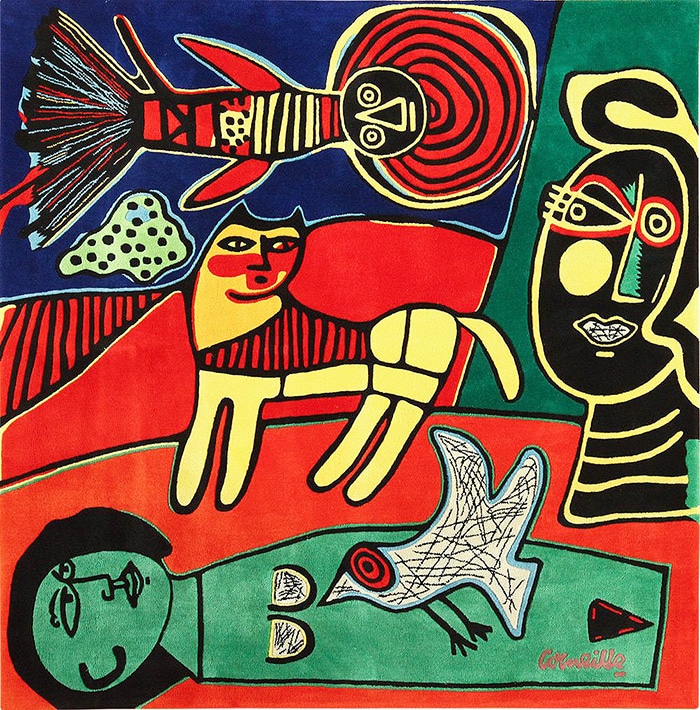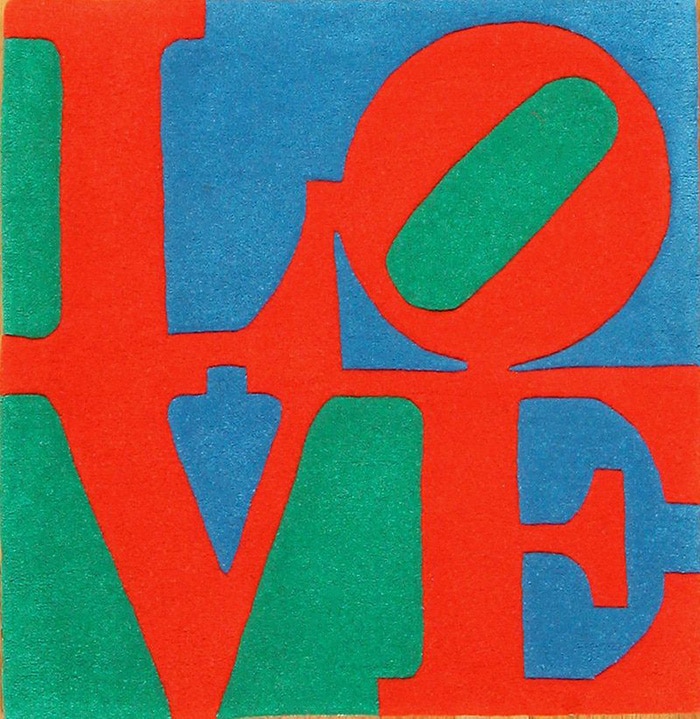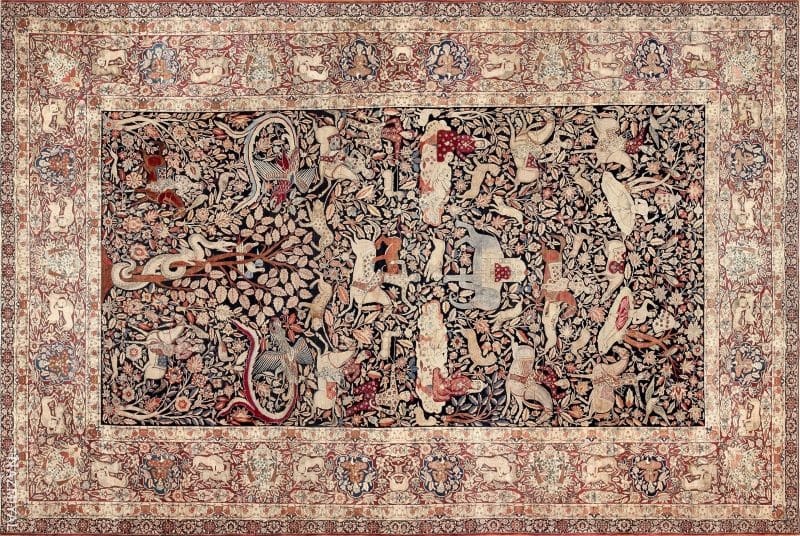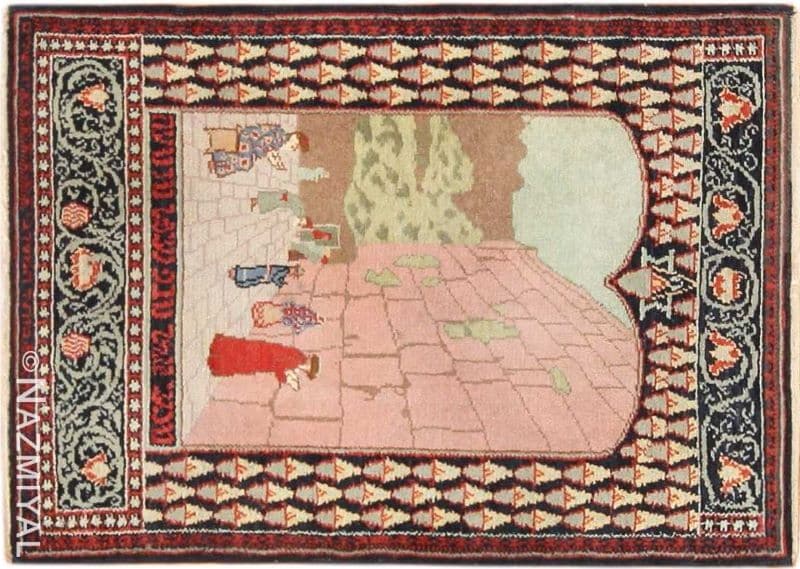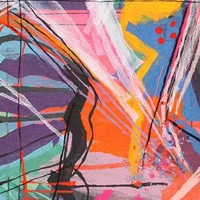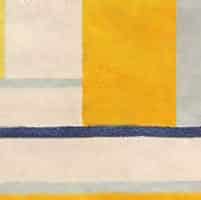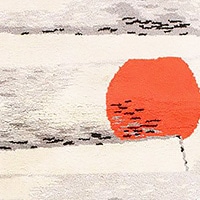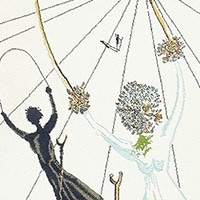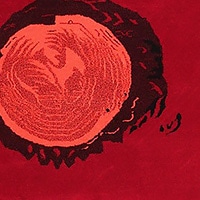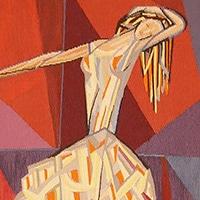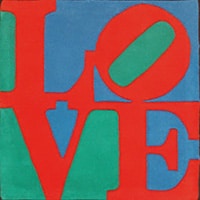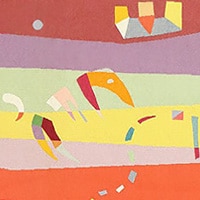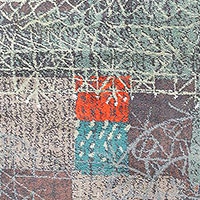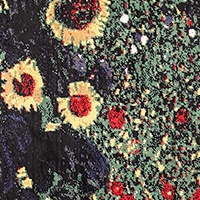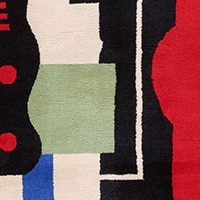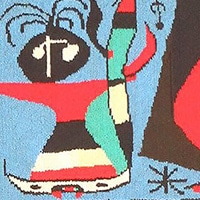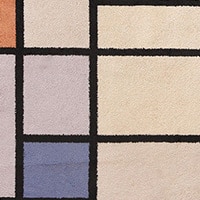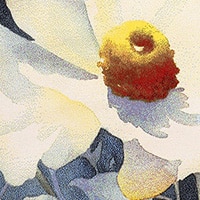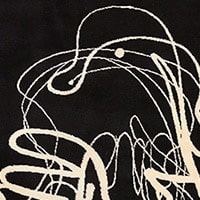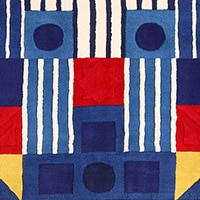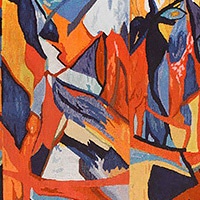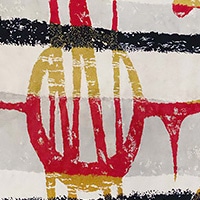Art Rugs
View Our Collection Of Art Rugs
Contemporary Artistic Piet Mondrian Inspired Modern Art Area Rug 11613
$8,813.00Size: 10 ft 8 in x 14 ft (3.25 m x 4.27 m)Artistic Modern Contemporary Piet Mondrian Design Room Size Area Rug 11457
$6,930.00Size: 9 ft 5 in x 12 ft 5 in (2.87 m x 3.78 m)Rectangular The Huari Design Kilim Rug By Genaro Rivas 60865
$5,950.00Size: 9 ft x 11 ft 10 in (2.74 m x 3.61 m)Rectangular Kusaska Tika Design Kilim Rug By Genaro Rivas 60870
$5,950.00Size: 9 ft x 11 ft 8 in (2.74 m x 3.56 m)Vintage Ege Pablo Picasso Run Of The Bulls Rug 47991
$14,750.00Size: 8 ft 2 in x 11 ft 2 in (2.49 m x 3.4 m)Vintage Paul Klee Ege Art Line Carpet Named “Structural 1” 71715
$18,500.00Size: 8 ft 2 in x 11 ft (2.49 m x 3.35 m)Colorful Vintage Scandinavian Ege Art Line Rug Named “Running” 71710
$14,500.00Size: 8 ft 2 in x 11 ft (2.49 m x 3.35 m)Vintage Scandinavian Paul Klee Florentinische Villenviertel Art Rug 71616
$15,250.00Size: 8 ft 1 in x 11 ft (2.46 m x 3.35 m)Vintage Swedish Robert Jacobsen Ege Rug 70077
$16,500.00Size: 8 ft x 11 ft (2.44 m x 3.35 m)Vintage Scandinavian Ege Art Line Robert Jacobsen Rug 49670
$14,000.00Size: 8 ft 2 in x 11 ft (2.49 m x 3.35 m)Vintage Swedish Ege Art Rug Based On Arne L Hansen Painting 49215
$12,500.00Size: 8 ft 2 in x 11 ft (2.49 m x 3.35 m)Scandinavian Rug after Piet Mondrian 47630
$18,500.00Size: 8 ft x 11 ft (2.44 m x 3.35 m)Gallery Size Vintage French Kilim Rug by Antonin Kybal 48892
$6,900.00Size: 4 ft 3 in x 10 ft 10 in (1.3 m x 3.3 m)Vintage Scandinavian Paul Klee Florentinische Villenviertel Art Rug 71513
$14,500.00Size: 8 ft 3 in x 10 ft 8 in (2.51 m x 3.25 m)Vintage Scandinavian Paul Klee Modern Art Rug 49757
$9,500.00Size: 5 ft 10 in x 9 ft 2 in (1.78 m x 2.79 m)Vintage Scandinavian Stream For House and Garden Josef Frank Rug 49820
$19,500.00Size: 8 ft 4 in x 8 ft 6 in (2.54 m x 2.59 m)Vintage Red And Black Pablo Picasso Design Rug 71452
$9,600.00Size: 6 ft 4 in x 8 ft 3 in (1.93 m x 2.51 m)Square Andean Checkers Design Kilim Rug By Genaro Rivas 60867
$3,675.00Size: 8 ft x 8 ft (2.44 m x 2.44 m)Pukllay Design Rug By Genaro Rivas 60869
$3,675.00Size: 8 ft x 8 ft (2.44 m x 2.44 m)Vintage Belgium Jan De Cock Art Rug 70733
$3,600.00Size: 6 ft 6 in x 8 ft (1.98 m x 2.44 m)Lars Gynning Mid Summer Dance Tapestry 46889
$48,000.00Size: 10 ft 8 in x 7 ft 9 in (3.25 m x 2.36 m)Impressive Modern Paul Klee Rug 70149
$2,520.00Size: 5 ft 3 in x 7 ft 6 in (1.6 m x 2.29 m)Vintage Geometric Israeli Bauhaus Yaacov Agam Art Rug 72250
$16,500.00Size: 5 ft 11 in x 7 ft 3 in (1.8 m x 2.21 m)Vintage Round Corneille Art Rug 48332
$9,500.00Size: 7 ft 2 in x 7 ft 2 in (2.18 m x 2.18 m)
Learn More About Art Rugs That Were Designed by Famous Artists
Art Rugs By Iconic Artists– Vintage designed Rugs by famous artists represents a collection of inspiring works of artists, architects, and master weavers from the past 200 years. From the ustads of ancient Persia to Scandinavian modernists to French expressionists and European architects and designers, the rugs in this collection may vary in size, color and design, but all are desirable from a decorative and collectible standpoint.
Some of these rugs by artists portray the unique vision of the artist, which is realized in the ancient art of carpet weaving, while others are simply woven renditions of previously conceived sculptures and paintings. Carpets and Rugs from the Art / Painting world are textural and tactile works of art as diverse as the skilled craftsman and artists who designed and produced them. This page is dedicated to those Vintage Rugs ( Rugs, Carpets, Textiles and Tapestries ) that were designed by these artisan.
Explore our special collection of art carpets and signed rugs to experience their creative personality and innovative style. The creators of these exceptional artisan rugs were serious artists and craftspeople who dedicated their lives to producing functional carpets that are truly works of art.
An unfathomable amount of time and effort went into composing the intricate ornaments, selecting the perfect colors and weaving these impeccable carpets. Persian ustads searched far and wide for the most talented dyers, and Scandinavian master weaver Ingrid Dessau clipped a lock of a hair to capture the perfect shade of gray. These artists spared nothing to create carpets and works of art that will always be outstanding. Enter the world of art carpets, and discover the creative ingenuity that differentiates these exceptional artisan carpets and Pop art rugs.
Rugs By Artists for Designer Interiors
The art rugs, especially those that were designed by famous and iconic artists are an impressive lot. These distinctive, creative carpets are a feast for the eyes and a delight to the senses. Art rugs are modern masterpieces that showcase legendary artistic works. The aesthetic value as well as the collectible nature of limited edition art carpets makes them coveted by art collectors and rug aficionados alike.
The creative fury of the early 20th century led to many innovative experiments, including art carpets. Thanks to this leap of creativity, the works of Wassily Kandinsky, Pablo Picasso, Joan Miro, Stig Lindberg, Yaacov Agam and many other great artists were immortalized in a new way. These collectible pieces have an infinitely modern presence and unparalleled artistic significance. Mid-century art rugs are must-have pieces for remarkable interiors.
Art on Art: Artisan Rugs
Artisan rugs, aka “art rugs”, designed by iconic artists, are the ultimate way to achieve a remarkable interior. These limited edition vintage carpets are desired and in demand among art collectors, rug aficionados, and interior designers alike due to their ability to be as decorative as they are collectible.
Artisan rugs are modern masterpieces showcasing legendary artistic works from artists including Picasso, Warhol, and beyond. These functional carpets that are truly works of art are a result of the creative explosion of the early 20th century.
Add a stimulating and sophisticated artistic presence with the use of vintage artisan rugs, designed by world renowned art icons.
Modern Art Rugs Are More Than Just Floor Coverings
Modern art rugs – The term “modern art” is often thought of as being art which was created within a certain time period roughly from the 1860’s to the 1970’s. That said, in the day to day, the term itself actually refers more to art that was created with a certain aesthetic in mind, rather than the specific window of time. Modern art is actually more accurately defined as art that defies the more traditional materials and means of production.
In its essence, modern art is highly creative or experimental in nature and is possibly best defined as artists and artworks that represent “outside the box” or original thinking. While many works of art that were created prior to the 1970’s actually fit more readily with the true nature of modern art, this means that some works of art produced after the 1970’s may be narrowly defined as “modern art” as well. This is true even though the artworks themselves may not actually fit the official definition of “modern art”.
While examples of modern art certainly include traditional art pieces like vases, sculptures, pottery and paintings, they also include items made for daily use such as rugs, pillows and even furniture. Part of what makes “modern art” modern art, is the idea of taking art off the wall or out of a display case and making it accessible and even usable on a daily basis.
Area carpets and rugs in particular are a perfect example of the design and intent of modern art. In fact, if you’ve ever thought of covering your floor with a high quality rug inspired by some of the greatest names in the world of modern art such as Roy Lichtenstein, Keith Haring, Paul Klee, Andy Warhol, Gustav Klimt , Maurits Cornelius Escher or even Corneille and Pablo Picasso, that dream can now be a reality.
The manufacturing techniques of modern rugs today are allowing carpet makers to convert some of the greatest works of modern art into unique and exquisite high end modern art rugs and carpets. In many cases, some of the world’s best illustrators, designers and color consultants will collaborate to create a quality masterpiece that is worthy of the original artist.
In addition to having existing works of modern art converted into rugs or carpets, the spirit of modern art can also be conveyed by having custom rugs designed to reflect your own unique aesthetic. This can include renderings of characters or illustrations from your favorite books or movies, non-traditional or unique patterns and shapes or even scenes from nature. Even the shape of the carpet itself can be unique, rather than a standard round, square or rectangle.
Many of today’s top interior designers will often pair a unique modern art rug with a vintage or traditional interior designs to make a bold design statement or do the reverse and place a vintage, antique carpet or traditional rug from Persia in a sleek, modern or even retro room decor. The juxtaposition of the modern with the vintage creates a unique and spectacular design feature.
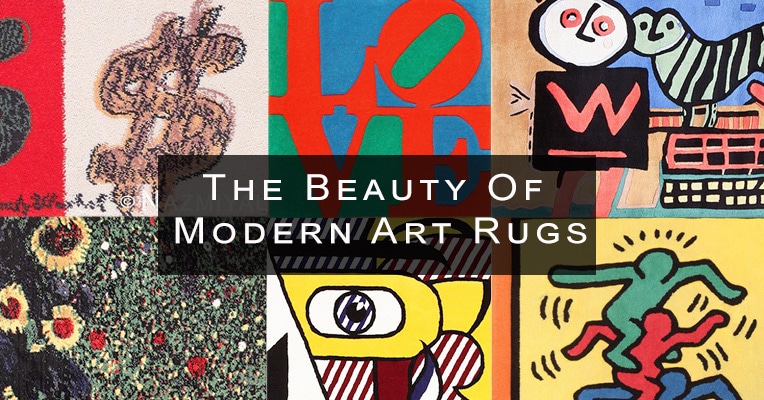
Modern Art Rugs
Some of our favorite modern art rugs that are currently available:
This post about the Modern Art Rugs was published by Nazmiyal Antique Rugs in New York City, NYC.
Related page: Textile Art
Looking At Rugs As Great Works Of Art
The beauty and artistry of rugs has fascinated people all around the globe for hundreds of years. There is no doubt that they serve a utilitarian function as furniture, but there is so much more to them than that, and the great examples are true works of art. Rugs have been a part of the art world and interior design for centuries.
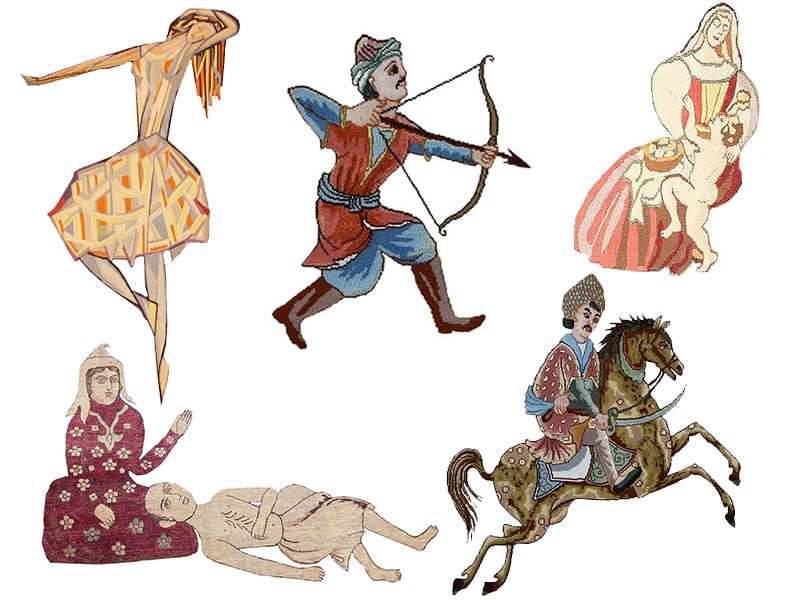
Rugs As Art
Rugs in Classic Art
When you begin to examine rugs as art, at least from an artistic standpoint, the journey will undoubtedly lead you to famous artworks of the Renaissance through the Victorian era. Many times, rugs found their way into the scenery of famous paintings, where they become apparent that they were viewed as more than simple floor or wall hangings. In the old world which was dominated by cold, stone walls, rugs added color and texture to an otherwise somewhat dull interior.
It is not surprising that many of these rugs found their way into artworks. For instance, Jessica Hayllar featured a antique Caucasian rug in her famous 1887 painting, Azalea in A Japanese Bowl. In this painting, the rug serves as a centerpiece that adds color and interest to the design.

Jessica Hayllar Azalea in A Japanese Bowl
Another famous painting, the 1887 painting The Carpet Merchant by Jean-Leon Gerome, features a splendid palatial rug as the main theme of the painting. This painting features a rug that is undoubtedly the work of a master carpet artist and highlights the rug as a work of art presented to a decidedly wealthy class of potential rug buyers.

The Carpet Merchant by Jean-Leon Gerome
European artists have had a long fascination with Eastern designs, particularly the Orientalist paintings at the turn of the 20th century. However, it seems that the peak of Western interest in Persian rugs was during the Renaissance. Between the years 1450 to 1550, many of Europe’s most famous painters featured Persian rugs in their compositions. It is apparent that these artists spent many hours studying the intricacies and design details of the rugs so that they could reproduce them in paintings.
Read more about antique rugs in paintings
Rugs As Art and Rugs in Art
Many trends in interior design and furniture come and go, but the beauty of Persian rugs and the artists who created them have endured the test of time. Many of the modern rugs that we find today are based on classic traditional rug designs used by rug weavers several hundred years ago. What makes each rug special is that it tells a story.
Most antique rugs are based on a design that has a field and borders surrounding it. There are many different variations in the designs within the fields and in the complexity of the borders. Every element of the design is intentional. For large rugs, it is highly likely that it will take over a year, to weave the rug. Creating an Oriental rug is not something that one does on a whim, as there will be a considerable amount of time, money and energy spent to produce it. This means that the choice in rug colors and design are well thought out, so that they give the final desired look that the artist intended from the beginning.
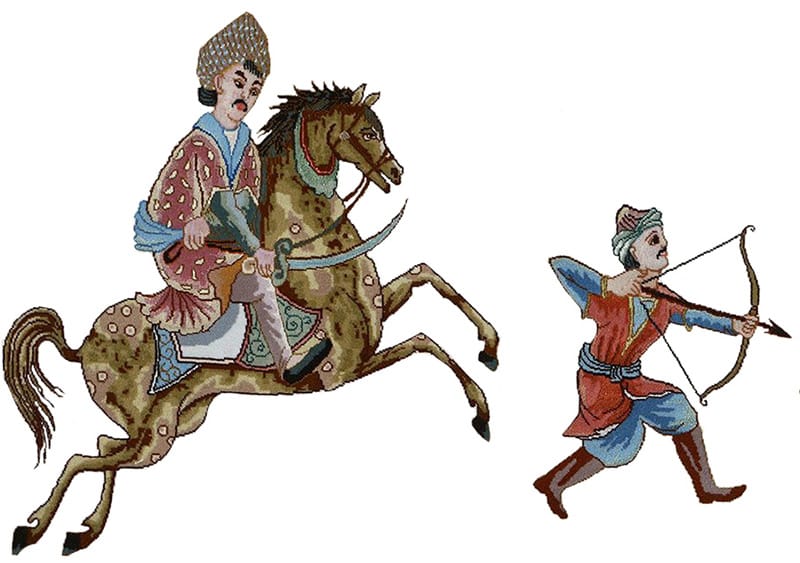
Artistic Rug Design – Hunter And Archer
To truly appreciate the artistry of rugs, let us go back and imagine ourselves in a world that was more isolated than the world we live in today. Today, we can cruise the Internet and see wares and treasures from all around the world with the click of a mouse. During the Renaissance period, only the wealthy, or perhaps those in the military, had an opportunity to travel and see treasures from different lands. An imported Oriental rug was considered as a fine piece of artwork and showed the taste and wealth of the person who owned it. This is why they were prominently featured in paintings. They were more than “just” a piece of furniture and told a great deal about the wealth and power of its owner.
The paintings tell us that these rugs found their way into the chambers of wealthy noble women, the homes of wealthy merchants, and the palaces of sultans. They were not featured in the background, but rather displayed prominently, sometimes playing a key role in still life painting or scenes of courtly life.
Who Are the Artists Who Created The Rugs?
One only needs to look at the masterpieces produced by the great master weaver Mohtasham and the other commissioned artists of the sultans, to know why people view rugs as art. These great master weavers created breathtakingly beautiful carpets that are appreciated as much (if not more) for their artistry as for their functionality. Even though rugs are known for their durability, it is apparent that they were not just a floor covering, they were meant to be appreciated for their own beauty and the skill of the designers, artists and weavers who created them.
During the time of the Safavid Empire in the 1500’s, it was common practice for the aristocracy to commission rugs as works of art to be displayed in their homes and places of business. Eventually, these commissioned designs worked their way into the repertoire of established of carpet making. The artistry and designs became a more standardized. However, this did not diminish the beauty and artistry of the designs of the court.
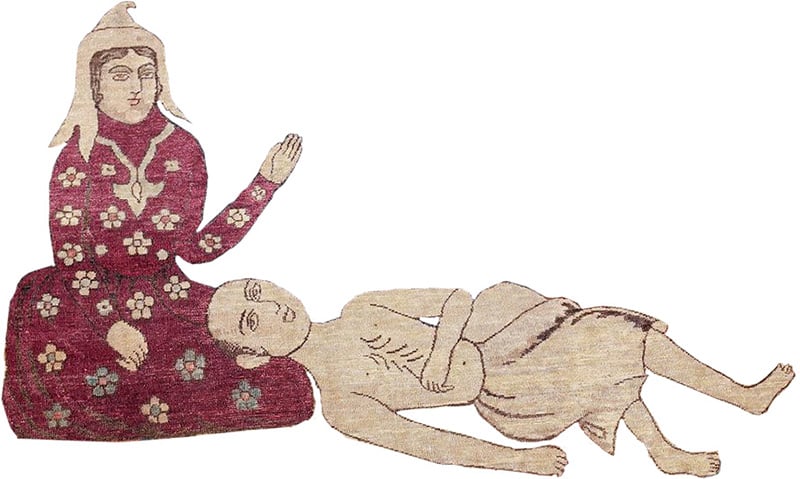
Rug With Artistic Rendering Of A Man And A Woman
Up to this point, we have talked about carpets produced as a result of formal artistic training and according to popular standards that have lasted throughout the ages. But there is another side of the art of rugs that must be told. This part of the story takes place in the small tribal communities and rural areas of the world. In these villages, the carpets were more likely to serve a utilitarian function than in the wealthy states of the nobleman. However, this dual function does not diminish the artistry of the local weavers.
In remote villages, far away from the standardized designs being produced in the city, were rug weavers who were both the designer and the producer of the rugs. Often, the rugs produced in these small villages used themes and motifs that are found throughout the area. They use the materials that are available to them locally to produce works of art that are every bit as beautiful as those produced in the cities where the production was more of a process.
The artists of the small villages can be compared to the folk art painters, such as Grandma Moses, and other primitive artists. In many of these areas, the craft was not learned through a formal school, but rather was the result of being passed down through generations of oral and hands on teaching. In the tribal rugs, one can often see changes in the design, as if the weaver suddenly decided to go off in a different artistic direction.
These village industry rugs have small imperfections in the design. For instance, perhaps lines are not straight, or design that is not perfectly centered on the field. These small imperfections remind you that this rug was handmade with love and care and that it is a form of self-expression of the artist.
Learn More About City Rugs vs. Village Rugs
Every Rug Is A Work of Art
It is easy to see that rugs and carpets have an intimate connection with the world of both informal and formal art. They have been the subjects of, and appeared in, the works of many great artists who showed their appreciation for them by replicating them in fine detail. The rugs are also a piece of artwork in themselves. Whether they were produced by the formal systems developed in the 1500’s and represent the fine pieces in noble estates or whether they were the works of individual tribal weavers using centuries of oral tradition for their designs, each one is a unique work of art in its own right.
Rugs have the ability to bring the garden indoors or make even the most common interior design look extravagant. When we consider, rugs as art, they can transform a room and tie the look together. If you need a special work of art for your own palace, rather grand or small, be sure to look around and you will be sure to find the perfect piece for your space.

